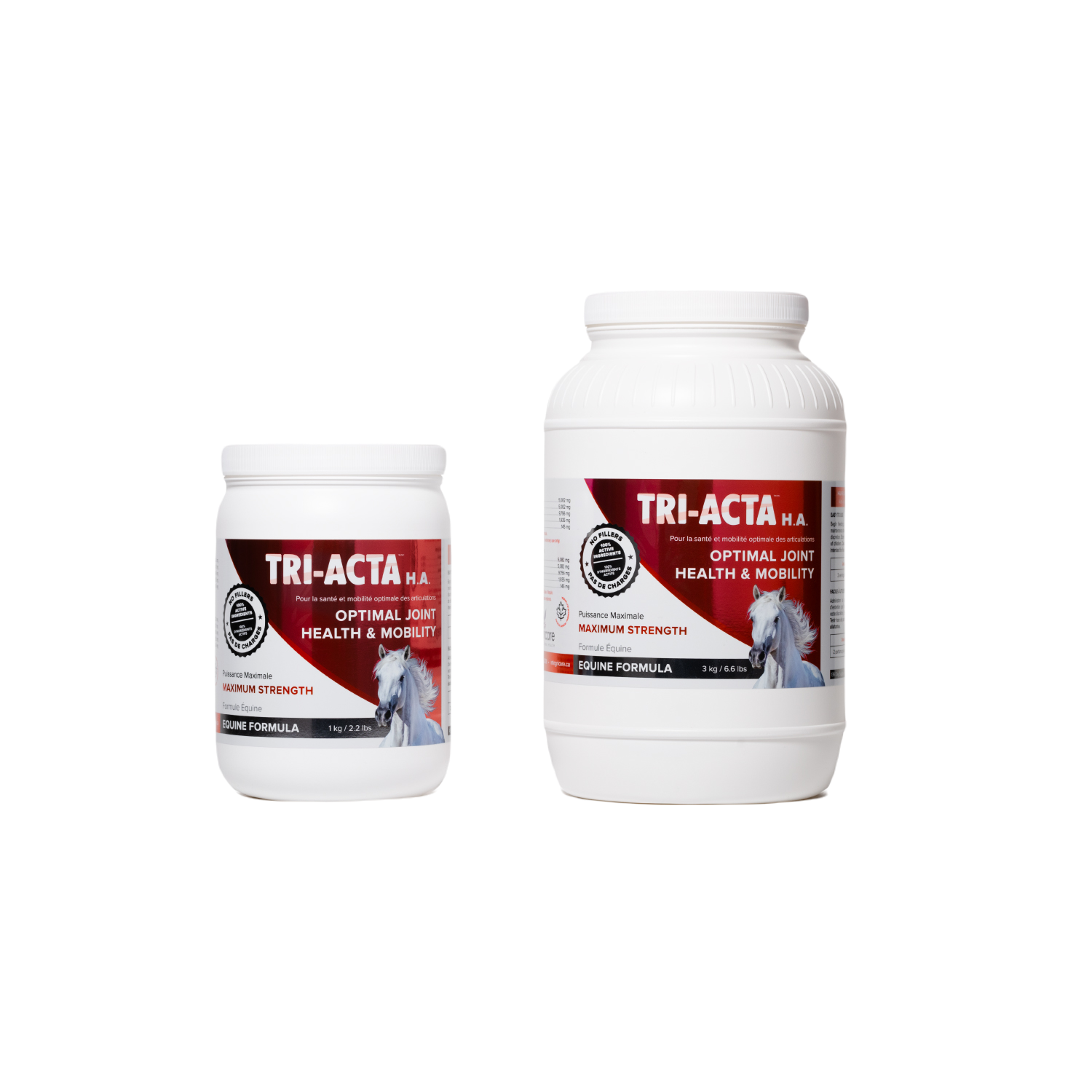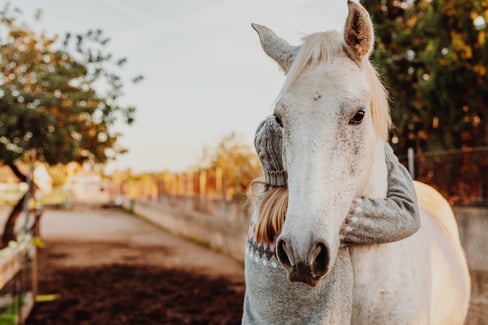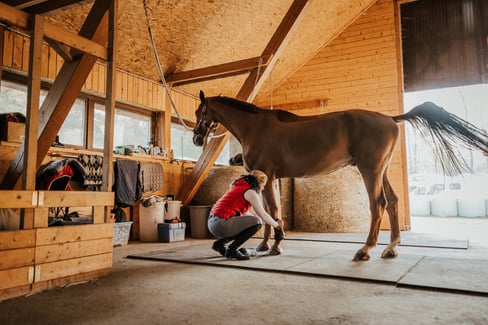Table of Contents
As much as we’d all like to believe our horses are invincible, they’re not. Just like people, riding your horse too much or going for the gold can lead to horse injury.
If you’re dealing with a horse injury with your horse and aren’t quite sure what to do, don’t panic. With the right treatment, tender love and care, and a little bit of savvy, you can get your horse up and at ‘em in no time.
In this guide, we’ll go over different horse injuries and how you should manage them.
What Causes a Horse Injury?
Horse injuries are accidents or unfortunate situations that typically occur during equine riding, training, or competitions. Unlike humans, horses don’t recover very quickly. In fact, more serious horse injuries can take equines as much as 12 months to recover!
Don’t let that scare you, though! Even though horse injuries should be taken seriously, in most cases, they’re avoidable or treatable.
Among horse injuries, the most common types are wounds, sore muscles, bruises, impaired ligaments, and damaged tendons. But, the most devastating of all these is an injury to the horse’s hooves and legs.
Without healthy hooves and legs, you could wind up with a lame horse. Lameness can require longer recovery and be tougher for horses to bounce back from.
That’s why knowing how to treat these injuries is so important. Let’s go over a couple of common injuries, causes, and treatments.
|
Injury |
Cause |
Signs |
Treatment |
|
Horses overworking certain muscle groups |
Reluctant during training with stiffer movements |
Resting for a few days and prescribing muscle relaxants |
|
|
Suspensory Ligament Injuries |
Heavy impact or stress during leg exercises |
Swelling and heat on the involved leg, feeling of lameness |
Cold therapy, anti-inflammatory drugs, stem cell treatment |
|
Flexor Tendon Injuries |
Strain because of missteps and heavy impact on the leg |
Painful to touch, the tendon can swell |
Rest, cold therapy, anti-inflammatory drugs, compression |
|
Puncture Wounds |
Sharp objects penetrating the horse’s skin |
Swelling and pus formation |
Cold hosing, prescribing antibiotics |
Remember, you also need to keep in touch with your horse’s vet. Although there’s nothing wrong with doing your part to help your horse, a vet always knows best.
Another thing to keep in mind is that when your horse isn’t quite feeling like himself, allow him to rest. An injured horse who still constantly trains and engages in high-intensity exercises can lead to poor horse health overall.
Causes of a Hamstring Horse Injury
Hamstring injuries are common in horses. Horse hamstrings are responsible for several different movements a horse makes, such as:
- Hip extensions
- Moving onto the animal’s side
- Kicking
- Jumping
- Fast turns
- Quick stops
- Propulsion from hind end
The result is that hamstring injuries usually affect a horse’s gait.
The main causes of a hamstring horse injury are not letting the horse warm up properly before training and straining during jumps.
Before you engage in any activity with your horse, make sure he’s properly warmed up. Otherwise, all those fast turns and quick stops can take a toll on your poor horse’s hamstrings. Propulsion from behind during dressage can also result in hamstring fatigue and injury.
If you suspect your horse is experiencing sore hamstrings, check whether he’s limping. Limping is one of the number one signs the animal’s legs might not be feeling so hot.
Other signs of hamstring injury include:
- Decrease in activity
- Lameness
- Possible swelling or warmth of the involved leg
- Avoiding standing using his injured leg
Now, don’t just make these diagnoses yourself! As much as we’d all like to assume that we know best, it’s better to have a vet confirm your suspicions.
Once you’ve got an official diagnosis on your horse’s hamstrings, let the animal rest.
FYI: Resting doesn’t mean zero activity! You can still allow your horse to roam, just make sure that you’re not engaging in intense training routines.
You can also apply ice to your steed’s hamstrings. This can help cool the area and bring down any inflammation.
Horse Injury to Leg Symptoms
Aside from sore hamstrings, horses can also experience injury in other parts of their legs. However, identifying the exact limb affected can be hard when there’s no obvious swelling, bruise, or wound.
The good news is that there’s a fast, simple method for checking for horse leg injuries. This method is called the step-wise approach, and it goes something like this:
- Assess the horse while standing: check whether he’s leaning more to one leg while avoiding putting weight on the other.
- Touch and feel the animal’s limbs: a common symptom involves the legs feeling warm. Also, check for any swollen tendons or joints.
- Let your horse walk and assess his movement: it’s easy to identify the involved leg when you see your horse awkwardly walking to one side.
Some of the other symptoms your horse might show when he’s experiencing leg injuries are the following:
- Unwillingness to transfer weight freely on all legs
- Rocking back and forth while standing
- A limb’s hoof has swelling or feels hot
- Foreign bodies, bruises, and wounds
- Head is nodding when the horse walks or trots
- Strength is diminished, especially when he strides
By using the step-wise method and checking for these symptoms, you can usually get a feel for how your horse is feeling. This should tell you whether it’s time to pick up the phone and call the vet.
Horse Injury Care Treatments
Horse injury care treatments depend on exactly what type of injury your horse is dealing with. And of course, you should always consult with your vet before treating your steed.
Still, there are a couple of ways that you can support a horse injury recovery, especially if it’s a leg problem you’re dealing with.
A few treatments include:
- Applying a cold compress
- Letting your horse rest
- Using a horse joint supplement like TRI-ACTA H.A. for equine
- Administering pain meds (such as phenylbutazone)
- Wrapping or bandaging the sore limb
Even though these are a few general ways to help treat a horse injury, that’s not a catch-all list. Some cases involve a bit more intervention from the vet.
For example, when a horse’s leg injuries are associated with cellulitis or wounds, it may be best to inform your veterinarian so he can prescribe antibiotics. Antibiotics can help limit possible infections, preventing further adverse effects from happening.
Another situation is if your horse is dealing with a severe leg injury. In these cases, your animal may require special therapy to get him moving again.
Besides all this, one of the best ways to help your horse is to be prepared for any emergencies. You never know when your steed might develop an injury, so put together an equine first aid kit to stay prepared.
Here's a useful list to give you ideas about what your kit should have:
- Your vet’s cellphone number
- A roll of gauze or cotton wool in case of wounds
- Non-adherent and sterile wound dressings
- Iodine scrub or antiseptic solution
- Bandages
- Scissors, thermometer, small towels, clean bucket
How Long Does a Horse Hamstring Injury Recovery Take?
Depending on the severity of the hamstring injury, it can take at least two weeks to a month before horses can fully recover. That’s considering they get the rest, therapy, and medications they need.
Treating a hamstring injury involves rest and cold hosing as the first steps, especially when it’s only a minor strain. Stall rests generally takes two weeks for mild strains.
After the two-week period, assess whether the horse is prepared for slow and controlled exercises. These movements can last for twenty minutes to an hour.
You can also gently massage the injured site to improve blood circulation. This also relieves the horse’s discomfort. If you do this, however, assess how the horse is feeling to make sure you aren’t hurting him further.
Gentle stretching is also a great way to get your horse back on time. It can help maintain the injured limb’s flexibility and mobility during the animal’s healing period.
If you take things slow and gradually work up to getting your horse back to performing, it can take up to six to eight weeks for a hamstring injury recovery.
But if the injury involves a muscle tear, you could look at a more extended healing period. This could take anywhere from three months to almost a year for the animal to recover fully!
Recommended Horse Hamstring Injury Supplements
When your horse is recovering from a hamstring injury, supplements can help speed up the healing process. While supplements aren’t medications, they contain the right nutrients your horse needs to combat the discomfort he feels from the injury.
Moreover, supplements are also good for the horse’s immune system. A healthy immune system means a healthy horse overall because its body can support the healing process.
Let’s take a closer look at a few key supplements to help your horse recover from sports injuries.
1. TRI-ACTA for Equine
Another ideal companion during your horse’s recovery is TRI-ACTA for Equine. This supplement contains substances for speeding up joint injury treatments. Plus, these products have no known contraindications or risks.
TRI-ACTA supplements provide horses with active therapeutic ingredients for repairing impaired immune systems and joint function. They can also help in relieving the horse’s pain and inflammation. A few other benefits include:
- Prevent injury recurrence
- Accelerate healing process
- Maintain the horse’s leg mobility
Better yet, these supplements come in an extra strength blend. If your steed’s injury is a result of age or a heavy workload, this special formula supplement might be the right move.
*Priced at $89.99 CAD as of November 2022
2. Platinum Performance Wellness Equine
Platinum Performance Equine Wellness is preferred by many horse trainers. Aside from the fact that its formula is veterinarian-developed, it’s also packed with the following nutrients and minerals:
- Antioxidants
- Omega-3 fatty acids
- Trace minerals
- Vitamins
All these substances can support your horse’s performance and improve his health, especially during muscle injuries. Platinum Performance Equine Wellness is good for the muscles, joints, skin, coat, digestion, hooves, and immune system.
*Priced at $99.60 CAD as of November 2022
3. MuscleAid - Horse Muscle Soreness Supplement
MuscleAid is another great supplement for muscle problems, especially for horses with severe muscle injuries. This supplement is an excellent addition for horses that regularly participate in training and competitions.
When horses are suffering from horse muscle pain, it can affect their overall performance. Muscle pain can also cause the horse to lose a significant number of training days.
The good news is that this supplement contains key ingredients for supporting muscle cell integrity and preventing these issues from happening. The ingredients include:
- Selenium
- Vitamin E
- Astaxanthin
- HMB
- L-Carnitine
*Priced at $70.44 CAD as of November 2022
4. Flexi Muscle
Ideal for sport horses, Flexi Muscle provides support to their musculoskeletal systems. This supplement relieves articular discomfort, protecting the muscular fibers and promoting relaxation.
Flexi Muscle is a dietary supplement ideal for horses who constantly engage in competitions. This supplement provides enough support for joints exposed to high loads and stress, preventing severe muscle pain and fatigue.
Flexi Muscle also reduces the impact of muscle cramps, especially in the leg muscles that are subjected to intense efforts during hardcore competitions.
A few of the ingredients that make this possible include:
- Collagen
- Antioxidants
- Glucosamine
- Chondroitin
*Priced at $92.11 CAD as of November 2022
Q&A
What are the most common horse injuries?
The most common injuries horses experience are ligament injuries, fractures, bruises, lacerations or wounds, foreign items entering the hooves, and skeletal trauma. Depending on the type of injury, the recovery process and the medications needed differ.
What is horse lameness?
Horse lameness refers to the animal’s abnormal gait or stance because of an issue in the leg motor system system. The main cause of lameness in horses is mechanical or neurologic dysfunction.
Summary
No matter how minor or significant a horse’s injury is, it has to be treated immediately. Doing so keeps your horse happy, healthy, and pain-free!
Of course, injuries are bound to happen at some point. In that case, the best thing you can do is to give your animal the rest and TLC that he deserves.
If you want to give your equines a boost to speed up their recovery during muscle injuries, check out TRI-ACTA. This supplement helps horses with inflammation to reduce pain and improve mobility.
TRI-ACTA H.A. for Equine
Our maximum strength formula is perfect for horses that are ageing, experiencing arthritis and stiffness, are in training and competition, or under a heavy workload.

Newsletter Signup
Subscribe to our newsletter to receive the latest news and exclusive offers.
.jpg?height=2000&name=Cliick_Integricare-DISPLAY-REVISEDV2%20(1).jpg)
Proactive & Therapeutic Joint Supplements
When given daily, Integricare joint supplements recover bone and joint injuries faster and help prevent mobility injuries from happening in the first place.









